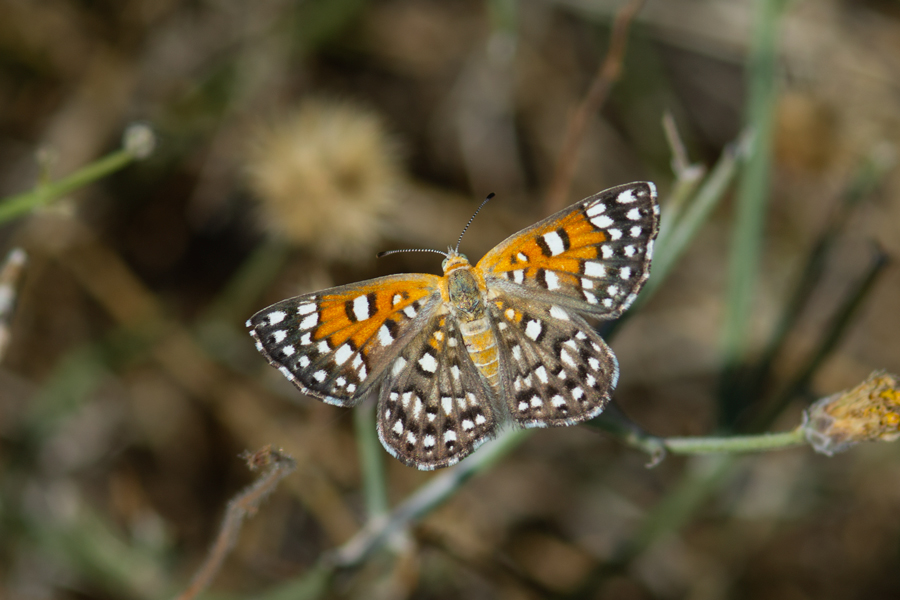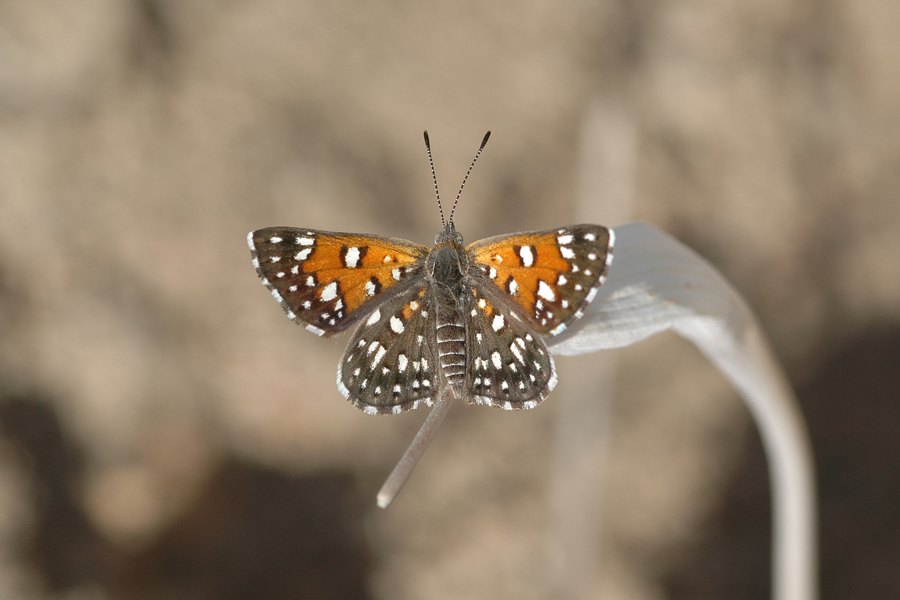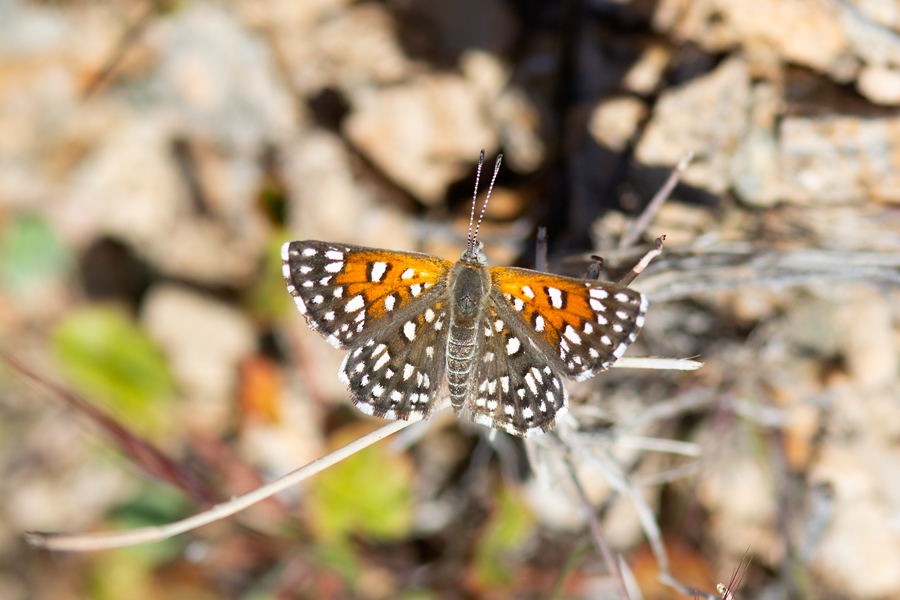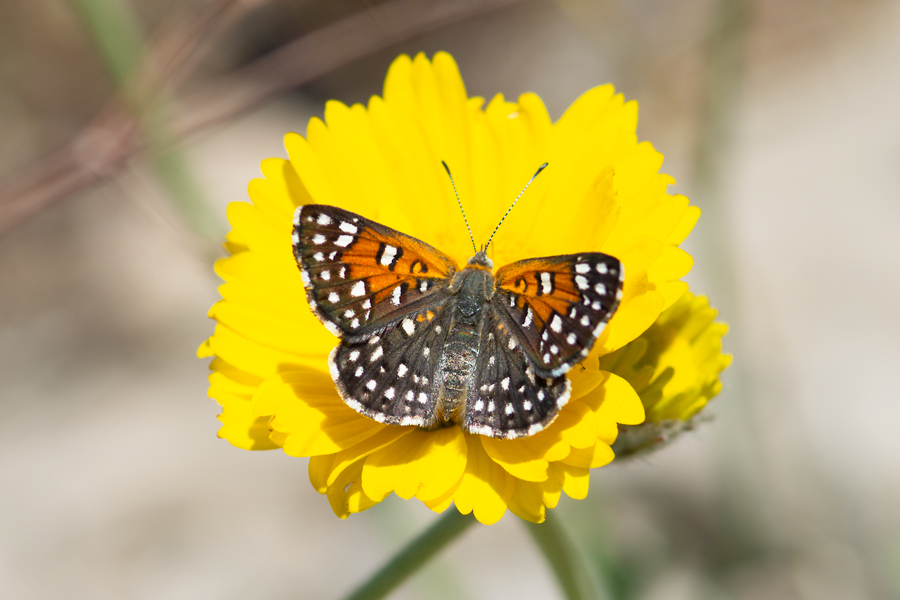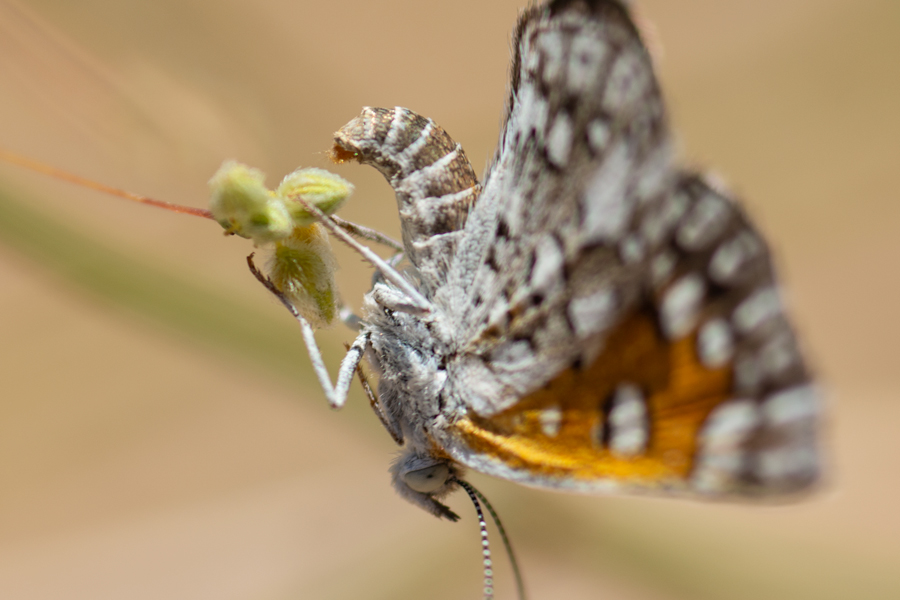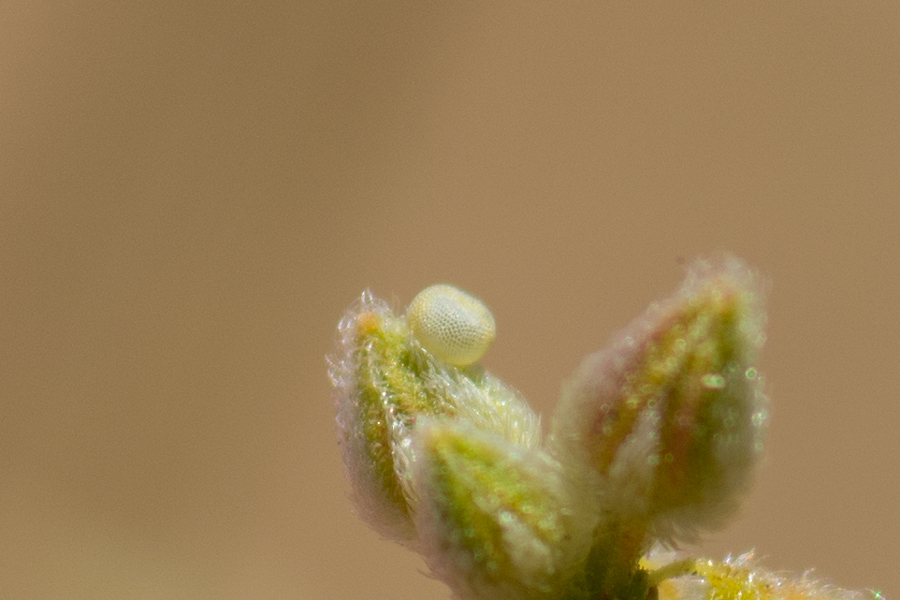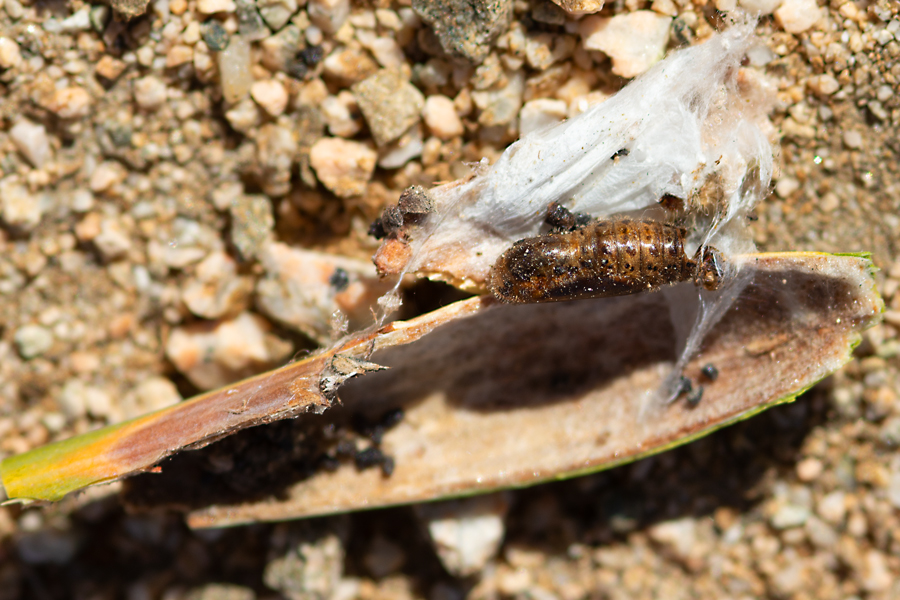Apodemia mejicanus deserti
Desert Metalmark
The desert (or sonoran) metalmark, usually referred to as a subspecies of Apodemia mejicanus (and once lumped with mormo along with the rest of the complex), is found in both the Colorado and Mojave deserts. Adults can fly almost any time, largely depending on the quality of its preferred host, Eriogonum inflatum (desert trumpet), which in turn depends on precipitation. So they are said to be "facultatively multiple-brooded," meaning they may have several broods in a year if conditions allow, or you may not see them much in dry years. In some places, deserti in sympatric (i.e., found in the same place) - or nearly so - with some other member of the mormo complex, and genetic testing bolsters the idea that they are a separate species from, say, virgulti or any of the single-brooded "mormon metalmarks".
In an important American Butterflies article from the Summer/Fall/Winter 2011 issue, Gordon Pratt, John Emmel and Gary Bernard placed the various mormo-complex populations in groups: mejicanus (including our deserti); duryi; virgulti; and mormo. These groups are defined by brood number and timing, egg size, and larval food plants. In the mejicanus group, only deserti is in southern California.
Deserti was named by Barnes and McDunnough in 1918 based on specimens from "Mr. G. Field of San Diego who captured them on July 11th in La Puerta Valley, S. Calif.; we have similar specimens from Palm Springs, Riverside Co., Calif., on the borders of the Mohave Desert." It took a little research to find La Puerta Valley, which I could not find on any maps I have. Turns out, an expert on small mammals named Frank Stephens (who, I believe, lived in La Puerta Valley, and whose field notes from collecting trips in the southwest are available online) collected some golphers on Mason's Ranch, described in the 1913 publication mentioning these golphers as being "five miles west of Vallecito, on the old overland (Butterfield) stage road." Mason's Ranch is also said to be "located at the lower end of La Puerta Valley." Mason Valley - indeed at the lower end of a large valley - is along the S2, with much of it just outside the jagged boundaries of Anza-Borrego Desert State Park. So La Puerta Valley is approximately 5-7 miles due south of Scissors Crossing, and a similar distance east of Lake Cuyamaca. It is where one would go to enter Oriflamme Canyon up the Mason Valley Truck Trail. Mason Valley/Vallecito are still extant and sparsely inhabited, but the name "La Puerta Valley" has seemingly all but faded away. All that to say: the type locality for deserti is this particular valley in the Anza-Borrego area.
